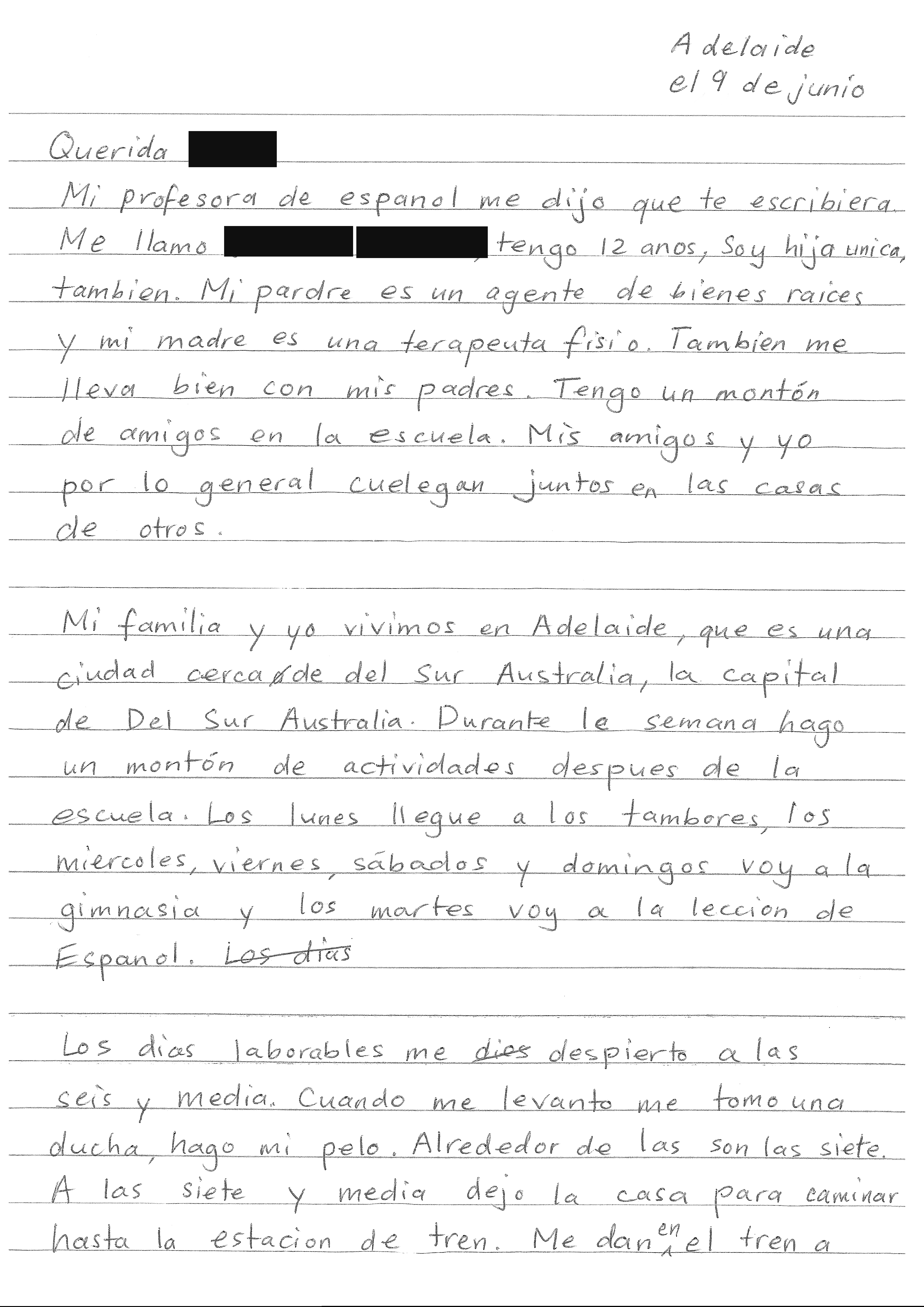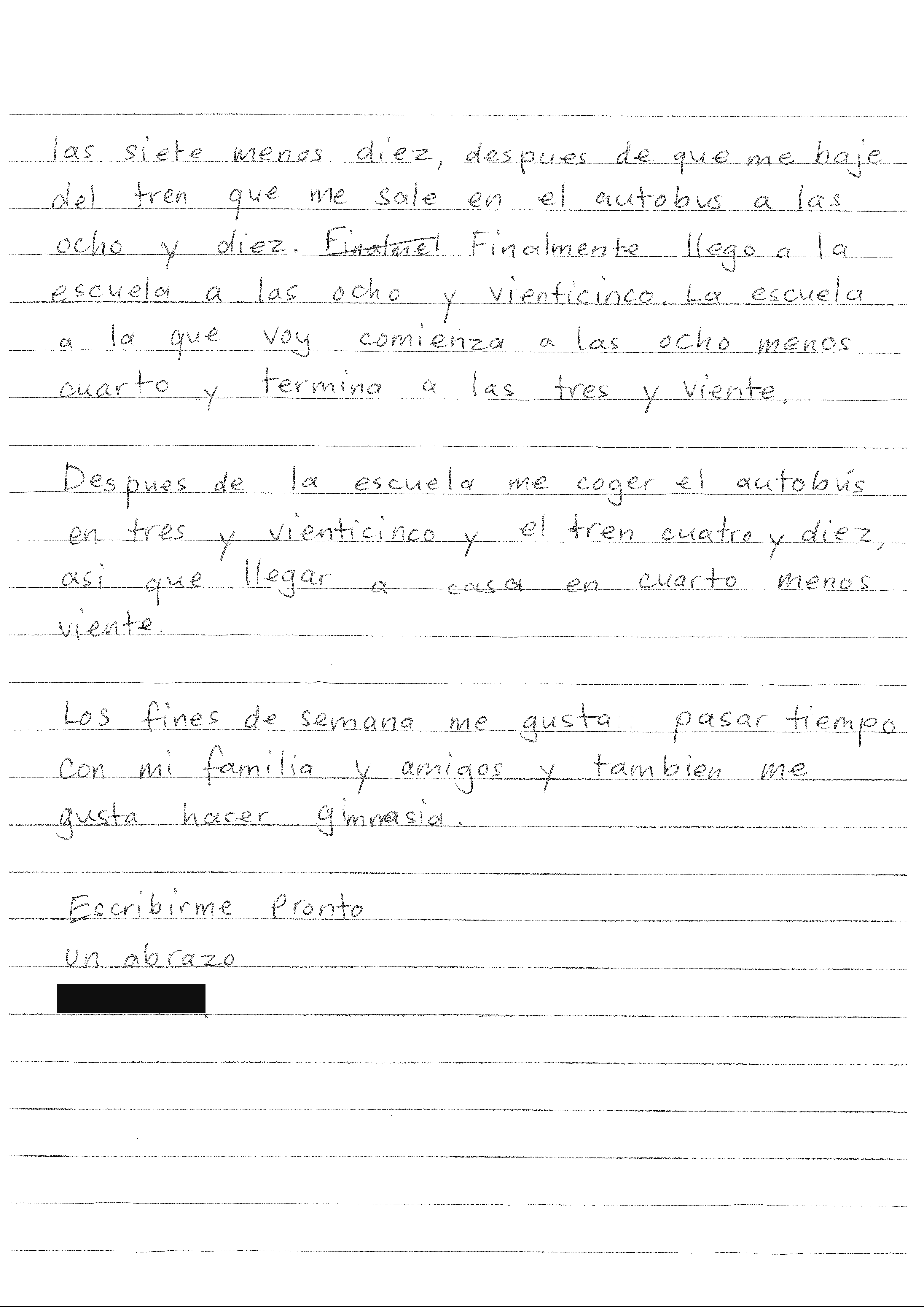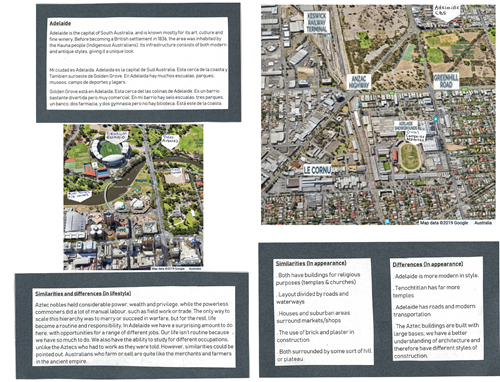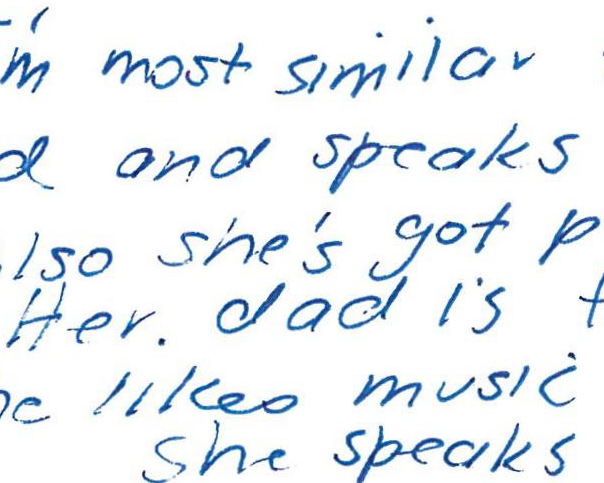By the end of Year 8, students share information about their personal worlds, including personal details, family, friends, leisure activities, likes and dislikes, for example, Hola amigo, ¿Cómo estás? Me gusta tocar la guitarra, No me gusta comer carne. They interact with one another in shared activities, negotiations, games and events, using modelled language to ask and respond to familiar questions, give and respond to instructions (for example, Haz click sobre la imagen del monumento. Escoge la palabra correcta), request help or permission (for example, ¿Me puede ayudar…?, ¿Cómo se dice… en español? ¿Puedo ir a beber agua? ¿Salimos al recreo ya?), and express opinions (for example, Creo que… ¡Qué sorpresa!). When interacting, students approximate Spanish sounds and use intonation to distinguish between statements (for example, Juan estudia español), questions (for example, ¿Cómo se dice …?), exclamations (for example, Juan, ¡estudia español!) and requests (for example, ¿me das un chocolate?). They obtain factual information and identify key points from different sources, using non-verbal and contextual clues to help make meaning. They describe characters, experiences and ideas using high-frequency vocabulary, and create short informative and imaginative texts using modelled sentence structures and formulaic expressions. When constructing sentences, students apply gender and number agreement to definite and indefinite articles, nouns and adjectives (for example, la luna clara, los bolsos rojos, un amigo español, unas estudiantes extranjeras). Students apply grammatical rules in relation to conjugation of verbs (for example, La bicicleta roja tiene un cesto negro, Tenemos los libros de lectura amarillos), and use the two verbs for ‘to be’ (ser and estar) in modelled examples (for example, Eres española/Estás en Australia, Soy alto y delgado/Estoy en año 8). They apply Spanish writing conventions such as inverted question and exclamation marks such as ¡No me digas! They work in Spanish and English to translate texts, and create simple bilingual texts. They describe their own experiences of using Spanish and explain how aspects of their identity influence their intercultural exchanges.
Students identify and apply rules for pronunciation and grammar and use metalanguage in Spanish to explain basic features of language, texts and grammar, making connections with terms such as ‘verb’, ‘adjective’, noun’ and ‘agreement’ that are used in English learning, and incorporating concepts such as grammatical gender. They identify the need to adjust language to suit different situations and relationships (for example, ¡Hasta pronto Doña Clara!). Students describe the distribution of communities of Spanish speakers in different countries and regions and know that Spanish is spoken in a variety of forms in different communities. They identify how languages and cultures change through contact, and give examples of Spanish words used in English such as ‘patio’, ‘chocolate’ and words used in Spanish that are borrowed from other languages such as shopping, tiquet. They identify cultural aspects of language use that are reflected in everyday interactions such as emailing, text messaging, gift-giving and apologising (for example, Lo siento mucho Don Pedro).








